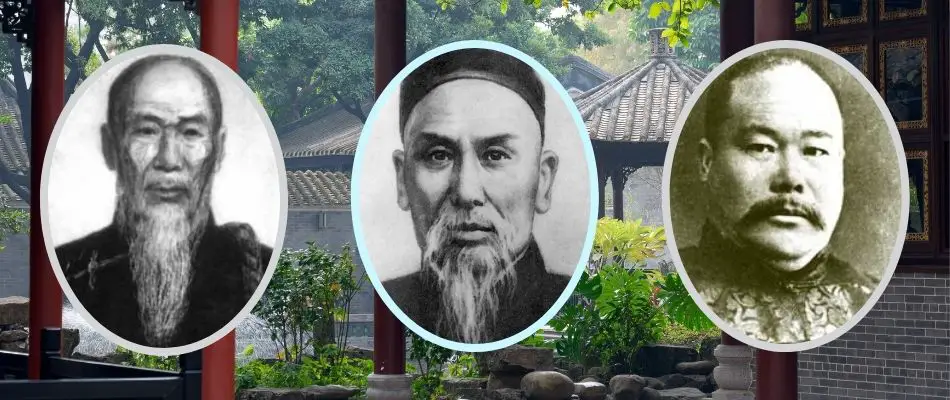The fact that you are reading this or know anything about tai chi can be directly attributed to the founders of Yang style tai chi chuan. While Chen Village was the birthplace of tai chi and Chen style the original form, it is Yang style tai chi that popularized and advanced the art in many unique ways.
Yang style tai chi chuan is an internal martial art that is the second oldest of the five main tai chi styles but is the most widely practiced. Known for its large graceful movements and health benefits, Yang style has several short, long, and weapons forms. It was founded by Yang Luchan in the mid 19th century and influenced the creation of Wu Hao, Wu, and Sun styles of tai chi.
This raises an extremely interesting question:
If Chen is the original source of tai chi, why did Yang gain so much prominence?
The answer lies in the incredible amount of work the founders did to develop the art, research and publish documents which still help us develop today, popularize it and teach it in the growing Chinese capital, and open their doors to the royal family, the military, their community, and eventually the world.
It doesn’t matter which style you are interested in or practice, you will benefit from knowing about Yang style’s rich history and resources. Due to the sheer popularity of Yang style, you will also more likely find Yang practitioners in your community. Understanding about their art makes it easier to find groups to practice with. Let’s start by talking about how Yang tai chi came to be and then move on to what makes it unique and showing some great examples.
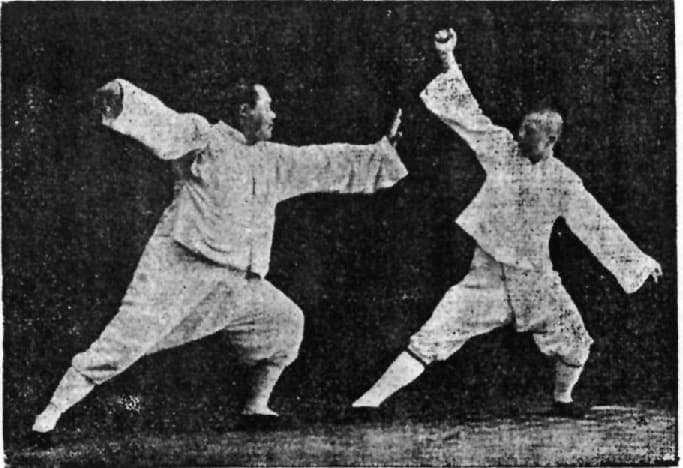
Yang Family Tai Chi Chuan History
The story behind the development of Yang style tai chi is really quite fun and interesting. It begins with a peasant farmer’s son and his rise to prominence in the martial arts world and eventual founding of Yang tai chi. Like every great “rags to riches” story, there is a mixture of anecdote, truth, and embellishment which brings the truth to life.
I have been part of many discussions over the “origins of tai chi” and feel that we, as modern practitioners have two paths we can take. We can doubt the records and flowery parts of the story because nothing can be proven beyond a shadow of a doubt. Or, we can enjoy the stories that were passed down to us and keep focused on the important point: Someone came from nothing. Learned an art form and developed it to a high level. Recorded it and passed it along so that millions upon millions of us for hundreds of years to come, reap the same benefits as the founders.
Stories, “folklore” if you will, are embellished not to be dishonest but to make a point about how important this addition to history is. Whether it is about a US president chopping down a cherry tree to let us know about his level of honesty or the unbelievable length of a Mongol’s sword to make a point about his strength. Every culture highlights its great achievements in this way. So enjoy what you learn about the history of Yang style tai chi. What you should get from it is that you too can come from nothing and benefit from learning the art.
Yang Luchan Founder of Yang Family Tai Chi
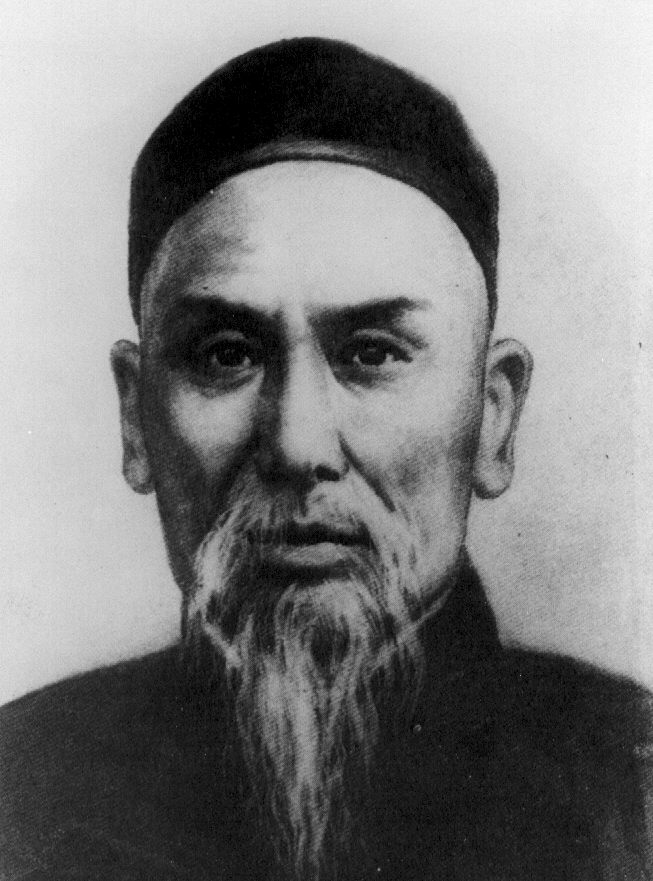
Yang Luchan was the son of a peasant farming family from northern China. At a young age he took an interest in the martial arts and was a dedicated external martial arts practitioner learning the Long Fist style of Wushu. Yang worked for a pharmacy in town which was owned by a family who moved to Yongnian City from Chen village. As the story goes, Yang witnessed some of the Chen family members defeat a group trying to rob the pharmacy. He asked the owner Chen De Hu to teach him the art but was instead given an introduction to Chen De Hu’s teacher in Chen Village. Yang Luchan moved to Chen Village and was taken as a student by 14th generation Chen style master Chen Changxing.
It’s at this point that you would think that the lineage, story, and development of the art would become more clear. Instead, there was not a lot written about this time and Chen Changxing’s relationship to the art is a bit mysterious. In a strange break from the way ancestors are typically described in history, authors go to great length to point out that Chen Changxing was a maverick, deviated from all of the curriculum at the time, and was a bit of a pain in the side of many people that encountered him.
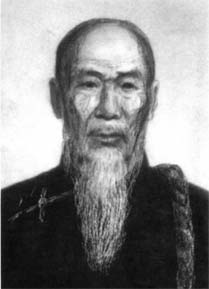
It was not an easy road for Yang Luchan and the story takes on a dramatic air as we are told that Yang was not immediately accepted into teaching but awoke one night to hear the shouts of training and he went to investigate. One version has him peering through the crack in the door and others through a loose shingle in the roof. He practiced what he saw daily and when he was finally asked to spare with students, he could not be defeated. Yang was then accepted as an indoor student of Chen Changxing.
The exact forms taught to Yang Luchan are not known but what is clear is that the fighting, posture, balance, and internal principals were all passed down. This accounts for the stark differences between the eventual Yang style tai chi and original Chen style.
What I think we should get from this story is that it was not an easy road for Yang. He was not accepted initially and had to work hard. Independently he had to train to develop his skills to be able to understand higher levels of training. Doesn’t this sound familiar? Seems like the same path is still before each one of us today.
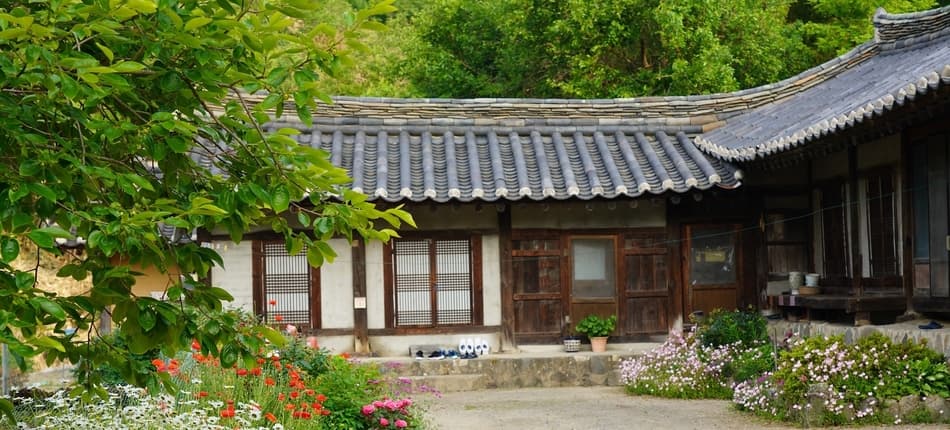
The Origin of Yang Style Tai Chi
Yang mastered what he had been taught in Chen village and was given permission to move to Beijing to teach. He began fighting in Beijing and all reports indicate that we went undefeated earning the name: “Yang the Invincible.” In all of the accounts, be they real, fictitious, or stretches of the truth, it is clear that Yang was using something softer and very different than all of the fighters who challenged him. His art was originally called Cotton Fist or Neutralizing Fist and Yang eventually adopted the name “Supreme Ultimate Fist” or Tai Chi Chuan.
Several of his defeated challengers were solders or were employed by the royal court. In 1850, at age 51, Yang was hired by the royal family to teach the Manchu Army’s Imperial Guards Brigade in the Forbidden City. Yang had been teaching and continued to teach non-family members in the city. This is an important inflection point not only in the history of Yang tai chi but in the history of all tai chi.
Yang Luchan’s decision to teach non-family members and the military began the spread of tai chi throughout China and eventually the world. Additionally, his top students would go on to develop the other three main families of tai chi.
In the second half of the 1800s leading up to the early 1900s we see the further development of Yang tai chi as Yang Luchan continued to teach until his death in 1872 and passed the art down to his sons. Military officers rose in prominence under Yang’s teachings or his sons. They went on to further develop Yang style along side his sons and founded Wu style and then Sun style. Wu Xiyang, a scholar, not only mastered the art but introduced many of the concepts of the internal arts before founding his own style Wu Hao.
Yang Style Tai Chi Movements
What makes Yang different than the other families of tai chi is also what makes it so popular. There is a beauty that exists in the Yang form because the movements are large, circular, and extremely graceful. There is also a balance in the way how Yang style included movements going in both directions and some postures are done equally to the right and to the left.
Yang style is also considered safer and more accessible for people of any age and any physical level. Yang style removed many of the difficult movements such as jumps, spins, and strikes. While there are still punches and kicks in the form, practitioners are not issuing force. Compare all of this to the more rigid styles that retain more of the marital focus. Or the compact styles like Wu Hao that reduce the distance of the steps and the outward motions of the arms.
Yang style tai chi movements are designed to improve health, flexibility, and wellness. The long form generally takes over 20 minutes to complete. As the form progresses the more difficult movements are further towards the end so that a practitioner is warmed up.
Yang Style Tai Chi Forms
Yang style tai chi has many short forms, some long forms, and several weapons forms. By talking about Yang style tai chi forms, we are heading into a pretty prickly area for most practitioners. There are some pretty strong opinions out there about whether someone should perform the short form or the long form or both. There are arguments both ways so before we jump into some video examples, let’s talk about the advantages and disadvantages of both.
| Advantages of the Short Form | Advantages of the Long Form |
|---|---|
| Easier to remember | Challenges your memory to keep your thinking young |
| Easier to complete | Strengthens your body |
| Easier for beginners | Is part of a 200+ year legacy |
| Easier for teachers to retain students | Is correctly organized to achieve internal development |
| Contains most of the principle movements | Contains all the movements |
| Correctly warms you up and works you out |
Hopefully you can see that are there are many reasons for and against the long and short Yang forms. Taking this argument further, the next debate is how short? or how long? From here we see that many masters across the next several generations had their own opinions. Today. this leaves us with Yang tai chi forms that are 16, 24, 28, 42,48, 96, 103, and 108 movements. Those are the most common and I am sure than I missed a few.
Yang Style Tai Chi Long Forms
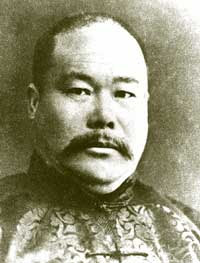
The original form taught by Yang Luchan is not really practiced. Most people who practice the Yang style tai chi long form are practicing a form designed by Yang Cheng Fu who lived between 1883 and a1936. He organized the forms into sections and was also able to use new modern technology to take photographs of the postures. Yang Cheng Fu further reduced the explosive nature of the early tai chi forms but was able to retain the flow of energy and invigorating nature of doing tai chi.
While there are certainly good reasons for or against learning a long form or short form, the number of moves that your form has really doesn’t matter. If you are fortunate enough to have a high quality teacher in your area to teach or have a training partner that is willing to work out with you, the quality of the form far outweighs how many movements it has. Let’s take a look at some long forms to see the grace and beauty that is obtainable by studying Yang tai chi.
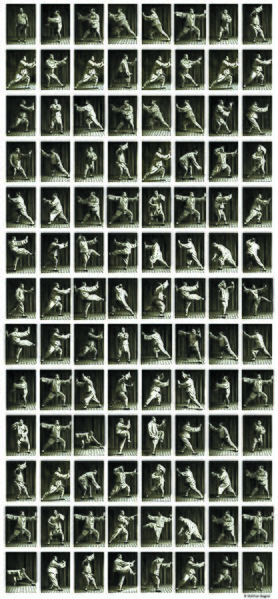
108 Yang Style Tai Chi
In this Yang style tai chi 108 form video you can see the original long form. It demonstrates the tremendous balance and grace that is possible from dedicated practice. It is one of the better Yang long form tai chi YouTube examples.
Tai Chi 103 Yang Style
To give you idea of what some of the other long forms look like, this is section 1 of the 103 movement form.
Yang Style Tai Chi Short Forms
Half way through the 20th century we start to see the development of Yang style tai chi short forms to make the practice more accessible to all learners and to standardize a form that can be used in competition. The Yang Style Tai Chi 24 Form is the most popular version as it was the primary competition form and designed to be practiced in less than ten minutes.
Yang Style Tai Chi 24 Form
Tai Chi 13 Form Yang Form
Tai chi 24 form too long for you? You’re in luck! Some people are practicing 13 and even 16 movement forms. The Yang Tai Chi 13 Form is said to contain the core movements of tai chi. Again, “short” might be too short but the development of the 13 and 16 Yang forms have definitely lead to more practitioners. Let’s take a look at some examples. I love this guy’s smile.
Tai Chi 16 Form Yang Style Back View
Yang Style Tai Chi Forms – Weapons
So at least the weapons forms are consistently all the same with the same number of movements, right? I wish I could say yes but there is just as much variety here. Different schools have different weapons and different weapons forms have different numbers of moves. The one good thing is that there is agreement about competition forms to keep consistency between competitors.
There are a whole host of weapons practiced by Yang stylists including the staff, spear, fan, broadsword, and sword. However, most schools concentrate on the sword forms.
Yang Style Tai Chi Sword
Master Yang Jwing Ming’s hand work in his sword form is just stunning. This is a piece from his Yang 54 tutorial videos but check out his hand and foot work. I am a Chen practitioner but I am blown away by his abilities every time I come across an example of his forms.
Tai Chi Sword Competition 42
The Tai Chi Competition Sword form with 42 movements is actually a hybrid form which includes movements from all the different styles of tai chi. I include it here, not because it is a specific Yang style sword form but because many Yang stylists practice it. This form was developed in the late 1980s prior to the 1990 Asian Games where Wushu was finally included as a category. It was developed by authorities from The Beijing Sport Institute and People’s University.
Tai Chi Broadsword Yang Style
When we get into the other weapons, things start to look a bit more martial and definitely more Chen-like. Here is an example of the Yang broad sword. It is easy to see how learning the broadsword form makes your open-hand form better.
Yang Tai Chi Fan
The grace and large movements of Yang tai chi make the fan form a perfect addition to this family’s forms. It is not one of the original weapons and many schools do not practice the fan. However, a big reason to learn a weapon form is to use it as a way to improve the open hand form. A weapon form can also teach you about specific energies that a form is trying to develop or a specific “flavor” or “feeling” that should be visible when a practitioner shows his form. The Yang tai chi fan is a perfect complement to demonstrate the beauty of Yang tai chi. If you are interested in learning the fan form we compiled some instructional notes in a separate essay.
How Many Forms Are There In Yang Tai Chi?
You can see by now that the answer is MANY! It really depends on what school you belong to. Most schools have one short form, one long form, often the sword form, and sometimes another weapon like the fan. There is one more benefit of studying Yang style tai chi over the other styles. The number of resources that are available is immense. We will conclude this essay with some of our favorites.
Yang Style Tai Chi Books and Video Resources
Yang style tai chi books are the easiest to find out of all of the styles. Add these Yang specific books to ones that are more general and you have enough reading for the rest of your life! Here are some books that cover the specifics of Yang style. The first three many would consider “must reads” and the rest are just really good.
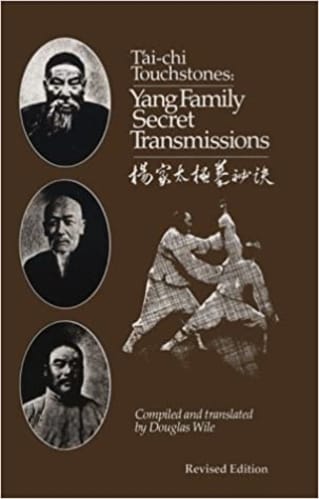
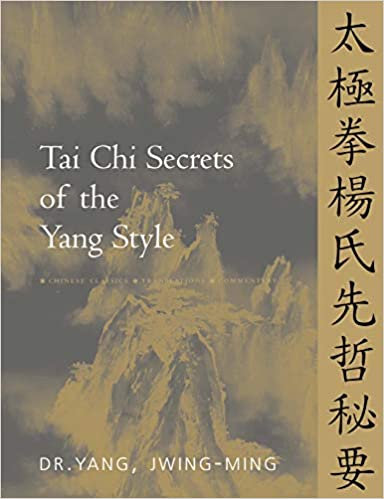
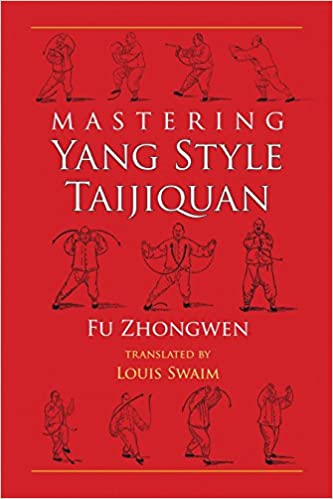
Tai Chi Sword Classical Yang Style: The Complete Form, Qigong, and Applications
Tai Chi Sword: Yang Style 32 Step Form
The Essence and Applications of Taijiquan by Yang Chengfu
The Yang Family Thirteen Principles
Yang Style Tai Chi Beginner’s Videos
Here are some videos for people just starting out. There is more explanations of the movements and some are modified for people who might be older or not in shape yet.
Yang Tai Chi Beginner Exercise DVD and Tai Chi Book Bundle
Yang Tai Chi for Beginners
Yang-Style Tai Chi Fundamentals for Beginners
Yang Style Tai Chi Long Form Video
Dr Yang Jwing Ming Tai Chi DVD collection is amazing way to learn or get more information about your practice. Dr. Yang has gone through the effort of making many videos to teach and preserve Yang style. You will see his name on a lot of DVDs and also great reviews. This Yang Style Tai Chi 108 Form Video also comes with a book.
Bundle: Tai Chi Chuan Classical Yang 108 Form Book and DVD
Tai Chi Yang Short Form Video
The Yang family tai chi short form can be learned in a video format and it’s also a really good supplement to help out if you are learning in a class but want a reminder. Here is the Yang short form available on DVD.
T’ai Chi for Health: Yang Short Form
An Overview the Main Tai Chi Styles
This is part of a series of articles that we wrote on all the most popular styles of tai chi. Keep reading in that direction or find out how to improve your tai chi form.
Primary source of Yang Luchan’s history: Wikipedia


